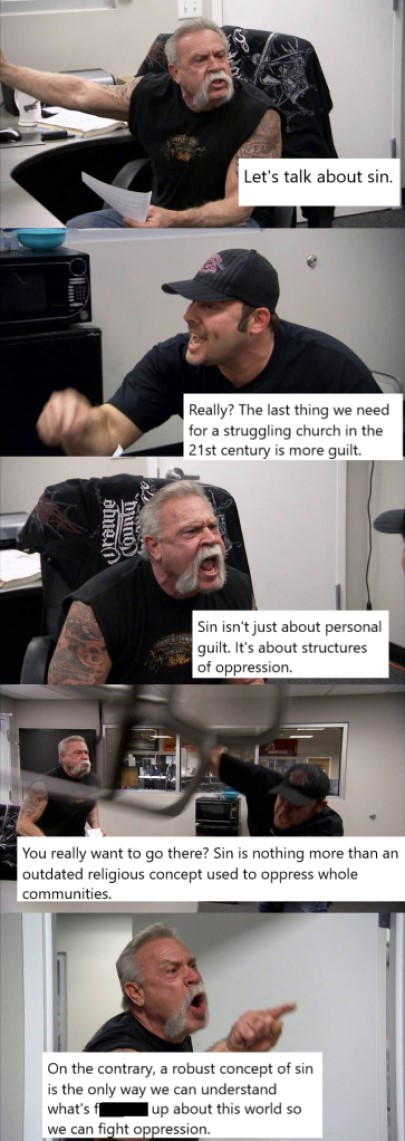
Making Memes as Public Theology in the Seminary Classroom
Teaching theology in the seminary is challenging. Many students, burning with zeal to do the “real work” of ordained ministry, pastoral care, often cannot immediately perceive theology’s role in that endeavor. Its utility for building community, performing diaconal service, celebrating liturgies, or providing spiritual formation is often not as apparent to them as it is to us.
I have found that one way to defuse students’ skepticism toward theology is by early, direct, and repeated emphasis on the relationship between theological imagination and the embodied practice of faith. Once students catch a glimpse of how theological symbols function (thank you, Elizabeth Johnson!) and, conversely, how practices shape theological symbols, they more readily apprehend how preaching, teaching, and living good theology are essential to providing the pastoral care they expect seminary will train them to give.
Last July, I participated in the Wabash Center’s Teaching with Digital Media workshop for the express purpose of developing more tools to help students connect the study of theology to the practice of ministry. As part of an exercise during the workshop, I reconceived a paper assignment at the end of the first term of a two-semester introduction to theology sequence I teach annually. I turned it into an outward-facing digital theology project. Having students dip their toes into doing a bit of public theology as the culminating task of a semester of study designed to demonstrate the link between conceptual and practical theologies seemed like it would further my pedagogical goals.
The assignment I gave them was to imagine themselves the director of adult formation at a church and to create an original meme (a still image or a GIF) for the formation-program Facebook page of the church. The meme was to communicate the importance of preserving a robust concept of sin in Christian theology and practice. Students had to share the meme as broadly as possible and solicit feedback on it. They then needed to write a brief paper that would (1) explain, in conversation with the relevant course texts, the theological choices made in creating the meme, and (2) report and reflect on how the meme was received and what the student learned from this as a theologian.
The results were remarkable.

Students created memes that were sometimes provocative, sometimes humorous, sometimes both. The richest and most sophisticated of them, not surprisingly, were produced by the students whose theological rationales were the most nuanced. What was gratifying about this was that they themselves realized this connection. They were able to grasp how easy it is to communicate theology sloppily and saw that providing a message consonant with the Good News requires a deep understanding of what that central communication is. If one is going to distill the Gospel into capsule form, such as a meme, with as little distortion as possible, solid theology is required. In cases in which viewers received a message different from the intent, students benefitted from a first-hand education in how easy it is to be misunderstood when concepts are not handled with sufficient care, and they could appreciate that this can have unintended negative effects on one’s audience and thus impair the pastoral relationship.

Some students were made anxious by the assignment because of lack of familiarity with meme culture or trepidation over engaging in public theological commentary. Confronting both of these anxieties is important for church leaders in training. Effective public communication in the visual and syntactical languages various publics use is crucial for those charged with mission, discipleship, and evangelism (the three foci of Church Divinity School of the Pacific’s program of formation). This may mean learning idioms quite different from one’s default mode of communication, and needing to translate theology well from one into the other. The anxiety this assignment provoked was, to my mind, the one commonly experienced when confronting a developmental challenge, and so it was, in the end, a productive anxiety.

This media-based assignment contributed nicely to my overall pedagogical objectives. Students were required to produce and disseminate a micro-theology expressive of their developing theological imaginations. They communicated a formational message with a theological foundation they could articulate and justify. They were thus given an opportunity to enter intellectually and affectively (and also tentatively and gently) into the arena of public theological exchange and to grasp how challenging, indispensable, and even, yes, pastoral, the discipline of theology can—and, in the context of these students’ particular vocations, must—be.
Great job! This is an excellent illustration how we can lean into this age!